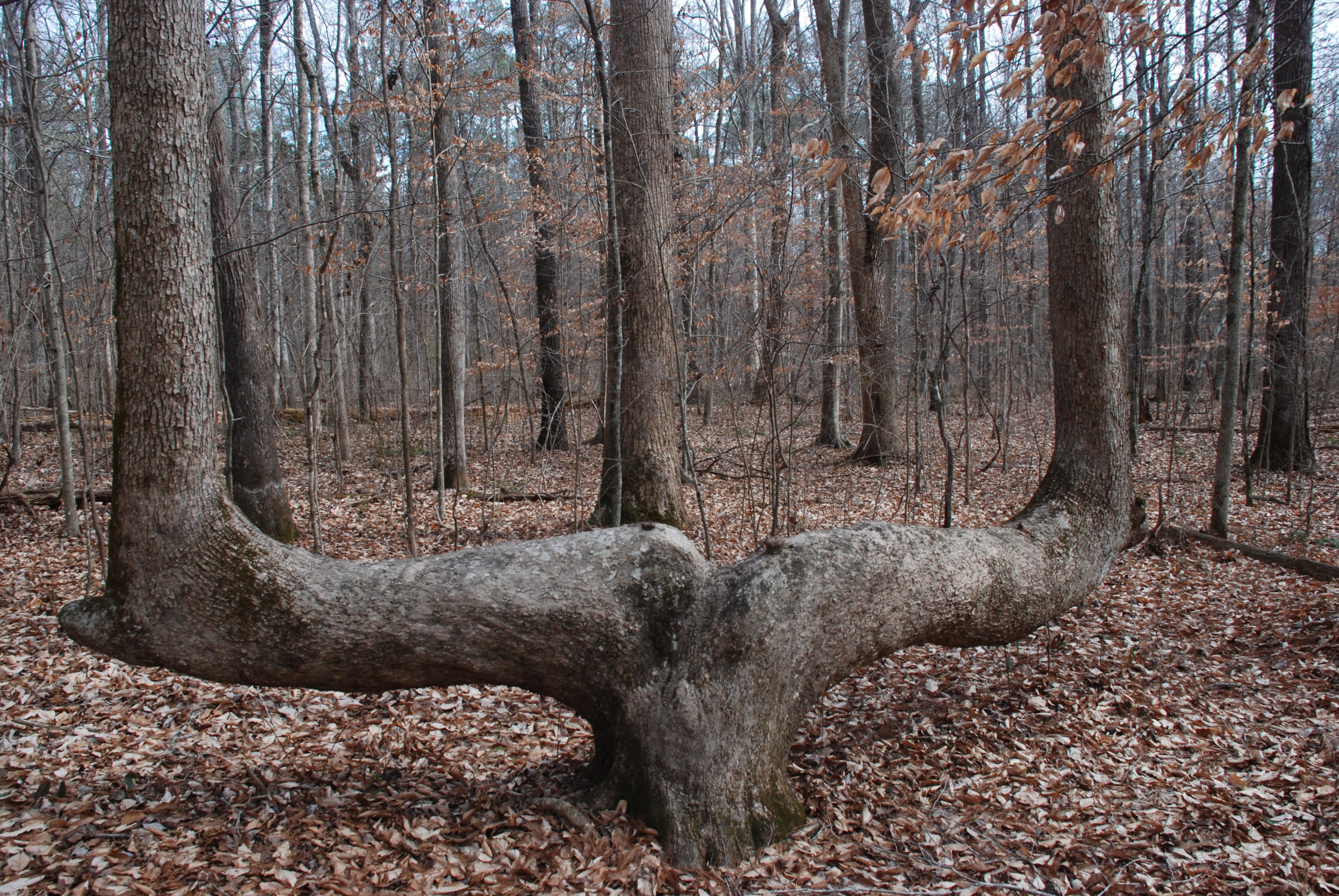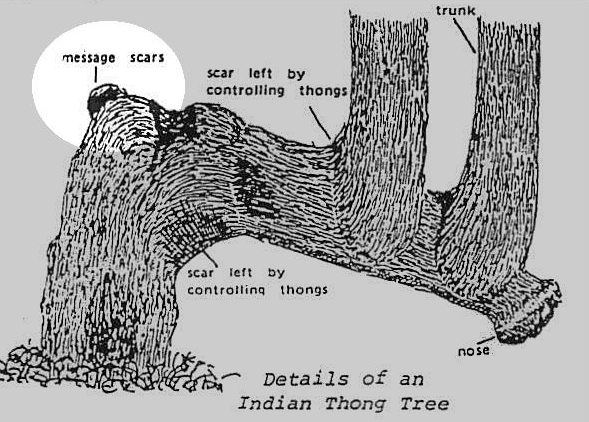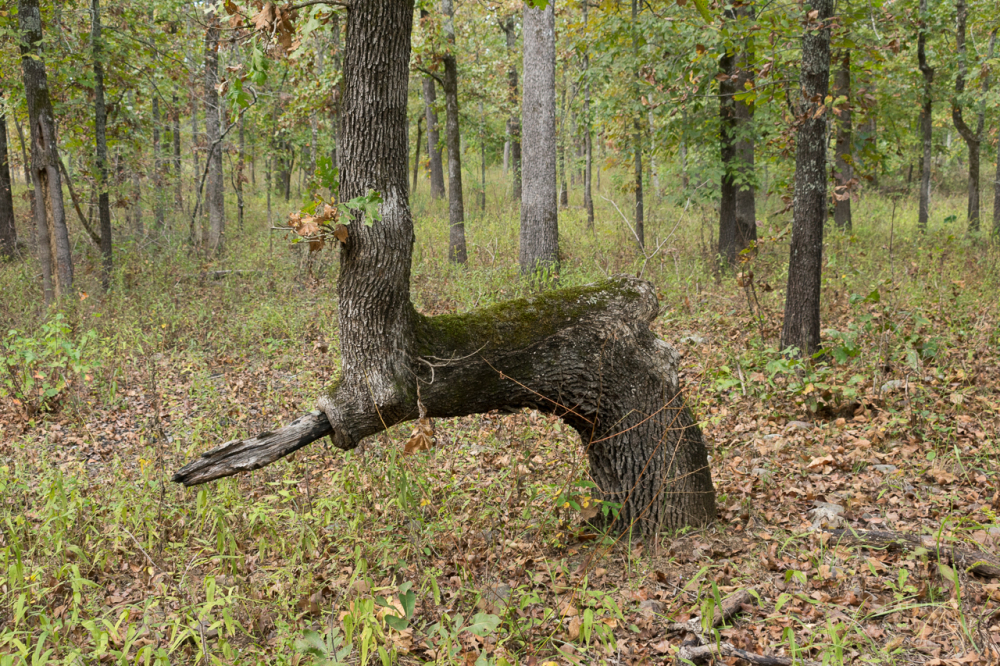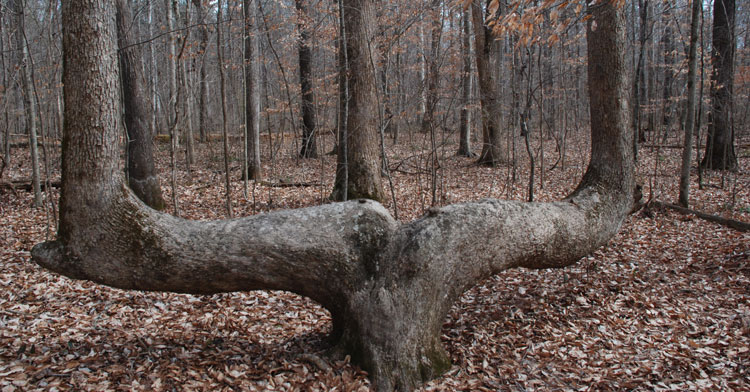The next time you’re out hiking and run across an oddly shaped tree, one whose trunk bends at a sharp angle near the base and shoots off in another direction, take a closer look. You may have just stumbled across a piece of living history.
Most “bent trees”get those odd shapes from ice, wind, uneven ground or from nearby trees or limbs falling on them. But for others, those unnatural bends are the result of human intervention. Roughly 200 years ago, when the trees were growing saplings, Native Americans used straps to tie down the trunks, forcing them to grow with a permanent bend.

Wikimedia Commons
Why? Because as they grew, these “marker trees”served as trail markers that guided the tribes along safe paths, toward water, and other landmarks.

Woodlands & Waters
Dennis Downes has spent nearly three decades years collecting information about “marker trees.â€
“Having the knowledge of these trail trees could mean the difference between life and death, between eating and starving, between crossing the river correctly or incorrectly.â€
There are several ways to distinguish marker trees from those that were naturally bent, but you have to look closely. Marker trees usually have a notch at the point of the bend, and scars from the strap that was used to bend the trees as saplings. Additionally, multiple trees may be bent the same way to denote a trail.

Arrowheadology
Most people don’t realize what they’re looking at when they run across a marker tree, which are “easily overlooked and can fall victim to development, disaster or disease with no one caring for them,”according to American Forests, which is dedicated to protecting and preserving U.S. forests.
Because trail trees are roughly 150 to 200 years old, many of them won’t be with us for very much longer. We may still be able to see this original roadmap of our country, but the window to do so is closing.
 Laurie Skillern
Laurie Skillern
Over the last two decades, roughly 450 potential marker trees have been reported to The Texas Historic Tree Coalition, although only a handful have been officially recognized as true marker trees. Additionally, members of the Mountain Stewards are working to map out all the bent trees across the country, and the group now has a database of more than 1,000, starting with the first discovery in Georgia in the early 2000s.
Want to help with the project? The next time you happen across what you suspect might be a marker tree, take a picture, note its location and send it to the Mountain Stewards.
Share to spread the word about the importance of preserving these historical trees!
Want to be happier in just 5 minutes a day? Sign up for Morning Smile and join over 455,000+ people who start each day with good news.



